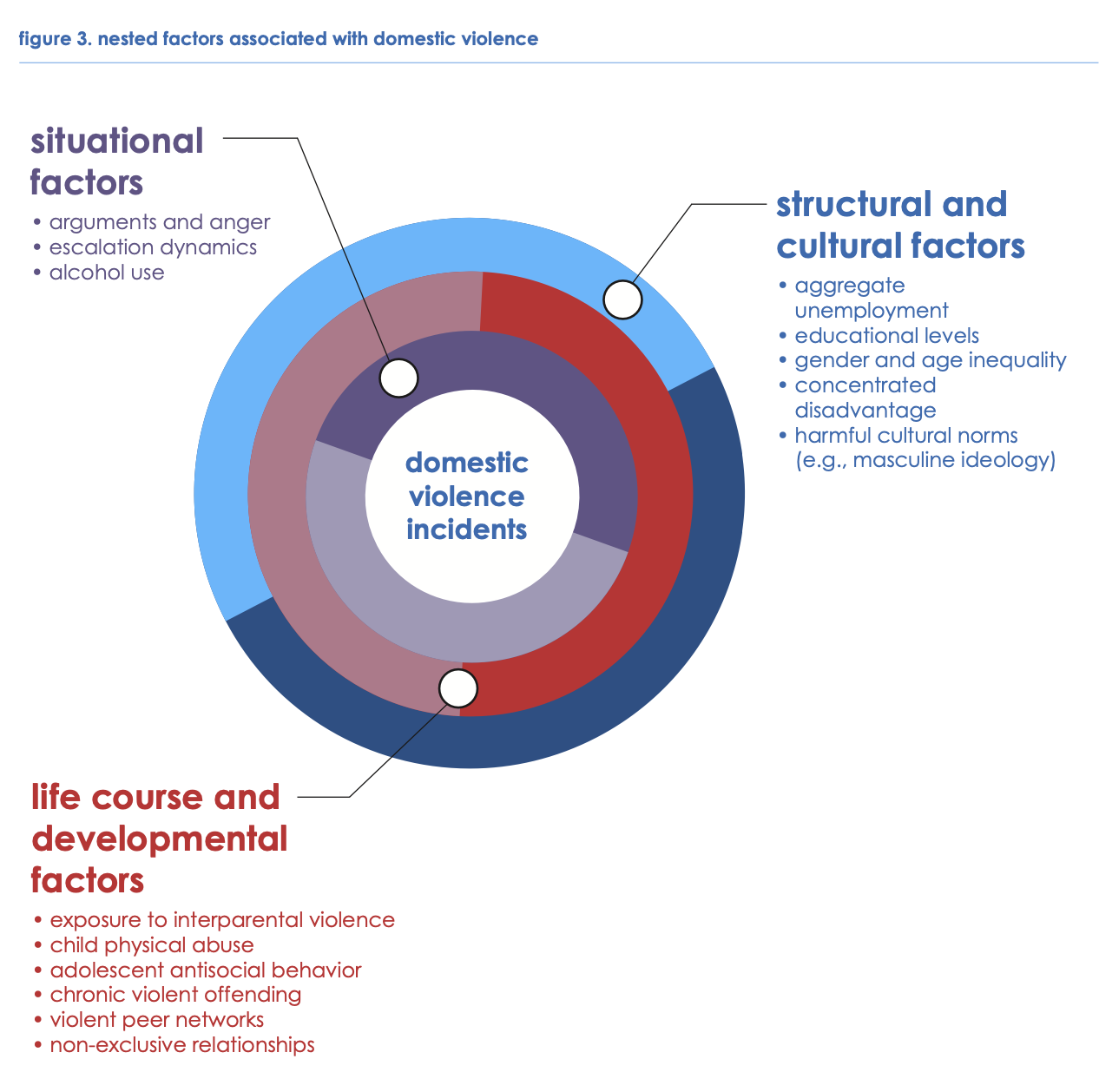Breaking the Cycle: A Life Course Framework for Preventing Domestic Violence
Forward Change synthesized a large body of research on the individual and ecological risk factors for perpetrating domestic violence that occur across the life course from in utero to young adulthood. The synthesis presented in this paper reinforces some of what is known and emergent in the fields of child trauma and brain development science, and it also uncovers new insights. The following are a few of the key themes and findings explored in the remainder of the paper:
• The prevalence and consequences of domestic violence.
Millions of women, men, and children experience domestic violence every year with profound short- and long-term health impacts. Many serious consequences follow in the wake of exposure to domestic violence for children and teens, including the risk that those who are exposed will continue the cycle of violence as they move into adulthood.
• The drivers of domestic violence.
The paper identifies three levels of factors that drive domestic violence: situational factors that provide the immediate or near-immediate spark for violence, such as arguments or the presence of alcohol; life course and developmental factors, such as child abuse, exposure to interparental violence, or having violent peer groups; and structural and cultural factors that drive violence in relationships, such as unemployment and poverty.
• Pathways to domestic violence perpetration.
The paper shows the consequences of exposure to violence at different ages, from early child- hood (ages 0 to 5) to middle childhood (ages 6 to 11) to adolescence (ages 12 to 19). The paper also demonstrates how this exposure can result in an increased likelihood of perpetrating domestic violence.
• The limitations of punitive approaches.
The paper assesses the impact of the “punitive paradigm,” which undergirds the current domestic violence safety net. While it is vitally important to hold harm doers accountable, the paper finds that focusing primarily on the arrest and prosecution of perpetrators may actually create more harm than good for some victims, and that truly reducing domestic violence requires an earlier and more comprehensive approach to prevention.
• Insights and actions to strengthen prevention.
The paper lifts up key insights from the research and translates them into actions that can form the basis of a forward-looking agenda to prevent and end domestic violence. Among the key actions recommended: focusing on “two-generation” interventions that serve both the parents and the children; re-evaluating punitive approaches and systems; addressing data gaps; viewing prevention through an equity lens; and more.

